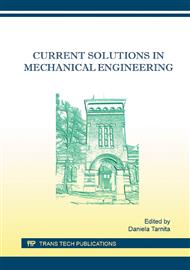[1]
https: /en. wikipedia. org/wiki/carbon_(fiber).
Google Scholar
[2]
E. Ghorbel, Interface Degradation on metal-matrix composites under cyclic thermo-mechanical loading, Composites Science and Technology, 57 (1997), 1045-1056.
DOI: 10.1016/s0266-3538(96)00172-8
Google Scholar
[3]
U. Zhou, Y. Wang, Y. Xia, S. Jeelani, Dynamic Tensile Properties of Carbon Fiber and Carbon Fiber Reinforced Aluminum, ASME 2006 International Mechanical Engineering Congress and Exposition, (2006), 207-212.
DOI: 10.1115/imece2006-15732
Google Scholar
[4]
Y. Zhou, Y. Wang, S. Jeelani, Y. Xia, Experimental Study on Tensile Behavior of Carbon Fiber and Carbon Fiber Reinforced Aluminum at Different Strain Rate, Appl Compos Mater, 14 (2007), 17-31.
DOI: 10.1007/s10443-006-9028-5
Google Scholar
[5]
P.D. Mangalgiri, Composite materials for aerospace applications, Bul Mater Sci, 22 (1999), 657-664.
Google Scholar
[6]
F. Rezaei, R. Yunus, R.A. Ibrahim, Effect of fiber length on thermomechanical properties of short carbon fiber reinforced polypropylene composites, Mater Des, 30 (2009), 260-263.
DOI: 10.1016/j.matdes.2008.05.005
Google Scholar
[7]
H. Rong, K-H Dahmen, H. Garmestani, M. Yu, K. I. Jacob, Comparison of chemical vapor deposition and chemical grafting for improving the mechanical properties of carbon fiber/epoxy composites with multi-wall carbon nanotubes, J Mater Sci, 48 (2013).
DOI: 10.1007/s10853-012-7119-2
Google Scholar
[8]
C.O. Burada, M.C. Miriţoiu, D. Bolcu, M.M. Stănescu, Experimental determinations of the damping factor and stiffness for new sandwich platbands with different core and reinforcements, Romanian Journal of Materials, 44 (2014), 405-413.
DOI: 10.4028/www.scientific.net/amm.801.182
Google Scholar
[9]
C.M. Miriţoiu, D. Bolcu, M.M. Stănescu, I. Ciucă, R. Cormos, Determination of Damping Coefficients for Sandwich Bars with Polypropylene Honeycomb Core and the Exterior Layers Reinforced with Metal Fabric, Materiale Plastice, 49 (2012), 118-123.
DOI: 10.4028/www.scientific.net/amm.658.255
Google Scholar
[10]
D. Bolcu, M.M. Stănescu, I. Ciucă, C.M. Miriţoiu, R. Cormos, Comparative Study about the Damping Properties of the Sandwich Beams with Core by Polystyrene or Polypropylene Honeycomb, Materiale Plastice, 50 (2013), 100-106.
Google Scholar


